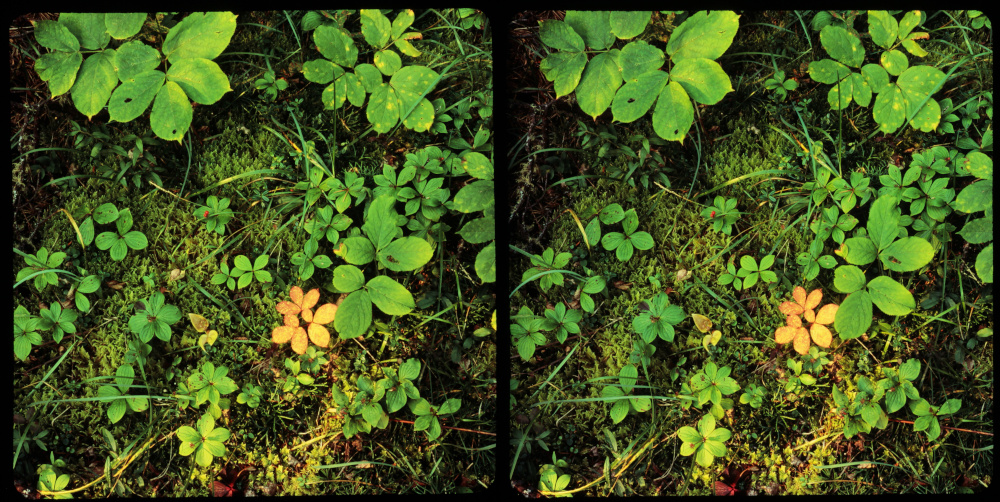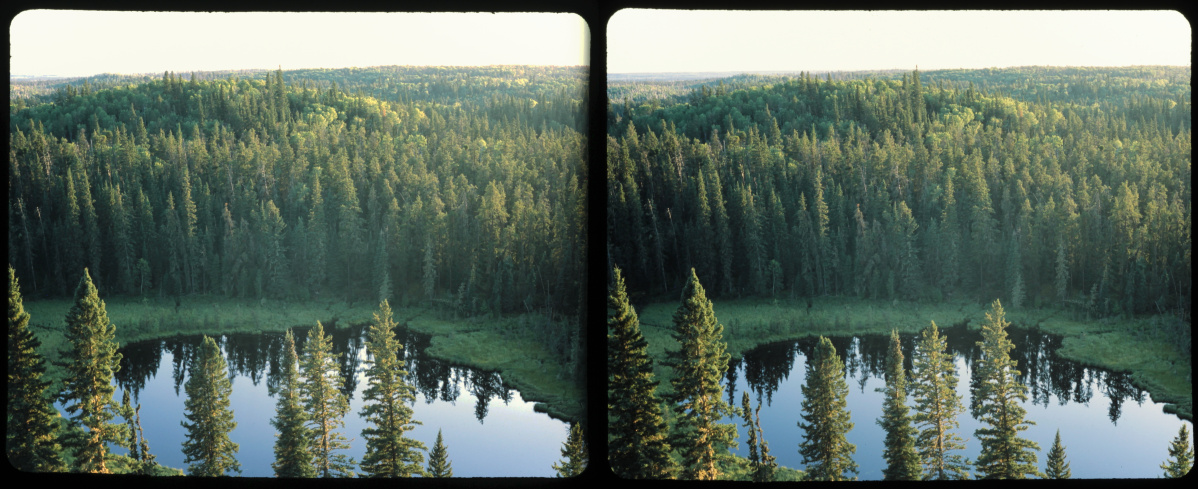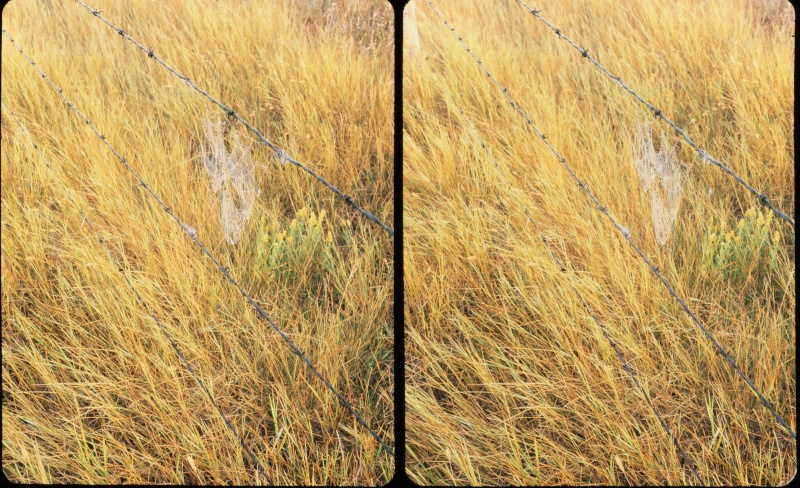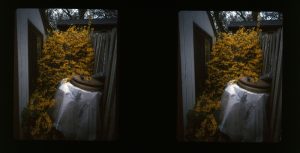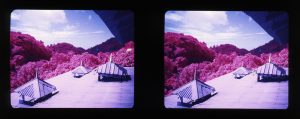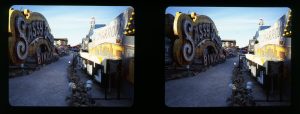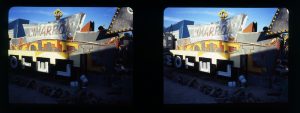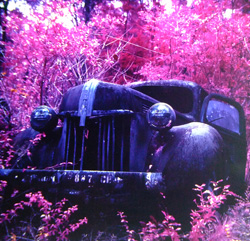Two of my contributions to this loop, Boreal Floor and From the Esker were taken at Narrow Hills Provincial Park in northern Saskatchewan. The latter was taken from an esker (ridge of earth pushed up by the last glacier) that runs along the park. It provides a nice vantage point looking over the boreal forest and numerous small lakes. Here I attempted a hyper stereo with my TL-120 by covering one lens and moving the tripod about a metre between exposures. There was a significant amount of smoke from wildfires in the area when I last visited the park, so unfortunately the sky was washed out and featureless in all of my slides.
The other two images were taken at Grasslands National Park very near the Saskatchewan-Montana border. Crested Wheat Corral is in the west block of the park where the remains of several small ranches can be found. The area is very arid, and ranchers tried tilling the soil to improve the pasture, but this turned out to be a poor practice. They introduced Crested Wheatgrass (native to Russia) to the disturbed soil with limited success, but it did prevent further erosion. Large portions of the park still contains undisturbed virgin prairie, which is probably one of the most disturbed landscape types on the globe due to its agricultural usefulness. It’s somewhat off-topic for MF3D, but I made a surprisingly successful silver gelatin print from this slide by making an internegative. I think that this approach yields much better results than a direct reversal print.
